|
 Secure Site
Secure Site
|
 |
Archive for February, 2012
 cherry blossoms Odorless, tasteless flower essences are the basis of a popular stress-relieving treatment that dates back to the 1930s.
By Steffie Nelson
Bach’s Rescue Remedy, a popular stress-relieving treatment, has been helping people chill out for decades. But if you asked regular users what’s in it, most would get it wrong. It’s a blend of five flower essences, but like all remedies used in flower essence therapy, it contains no physical part of the flower.
Flower essences are odorless, tasteless infusions of flower blossoms. Originally developed in the 1930s by British physician Edward Bach, they’re designed to treat emotional imbalances caused by temporary troubles such as fear, anxiety, or panic, or by long-term problems with your love life or career. Bach crafted 38 remedies that bear his name and are still used; hundreds of other versions have been created by independent flower-essence makers all over the world. (They are especially popular in Cuba, where they’re covered by the national health care system.)
Practitioners of the therapy acknowledge that by the standards of Western medicine, it’s hard to see how something so diluted could have healing effects. But Richard Katz, founder of the Flower Essence Society, based in Nevada City, California, says a different paradigm applies: “Flower essence therapy is based on the idea that a human being is more than biochemistry. We have a soul and an energy field.” Katz says the essences work on a subtle level. “The vibrational quality of the flowers elicits different healing responses in the body,” he says, “just as the vibrations from different types of music will elicit different responses.”
Most essences work best in monthlong treatments, taken up to four times a day. Place them under your tongue or dilute them in a glass of water; dab them on the pulse points on your wrists or neck; or swirl them into your bath. Choosing the right essence is key, so find a practitioner who will take a detailed inventory of your emotional state, work life, and relationships. The Flower Essence Society (www.flowersociety.org) can provide referrals.
 Now & Zen's Family of Products, Boulder, Colorado Now & Zen, Inc.
1638 Pearl St.
Boulder, CO 80302
(800) 779-6383
adapted from Yoga Journal.com
Posted in yoga, Yoga Timer, Yoga Timers by Now & Zen
 Kid Yoga Lotus Pose Kick up your heels a little on your way to wisdom, freedom, and joy.
By Jenny Sauer-Klein
The great philosopher Plato said, “You can discover more about a person in an hour of play than in a year of conversation.” Playing is a powerful way to gain insight into yourself, too. Play brings you into contact with your natural state—anando hum(literally, “I am bliss”). It’s a state of harmonious connection with yourself, with your playmates, and with the greater whole. Its spirit is contagious and multiplies itself without effort, raising the vibration of everyone it touches.
Much like the state of deep meditation, true play is a mode of becoming fully present and available to the mystery and wonder of each unfolding moment. In that moment of complete immersion, you release the crystallized assumptions of your past experiences and enter a world of innocence and possibility.
Children can exist in this state for hours because they are not afraid to dream big, to pretend, to bring their fantasies to life; they believe that anything is possible. Falling, laughing, and getting back up to try again come naturally to them. But as we get older, patterns of self-doubt, fear, and mistrust of ourselves or others can interfere with our ability to play with happy abandon,to dare to take risks with an open heart.
Play is my life’s work. When I teach AcroYoga, I’m helping adults to feel like children again,to trust themselves and each other,and to rediscover that belief in infinite possibility. Most adults need a fine balance of structure and freedom in order to feel safe enough to play and take risks. When we fly in AcroYoga (imagine parent and child playing “airplane”), defined roles and rules help ensure everyone’s safety. The magic word is “down,” which means “time out—let’s come back down to earth.” The roles and rules satisfy the intellectual mind, creating space for the flier to experience the pure joy of being held in the air, probably for the first time since childhood. I often see initial fear and doubt turn into elation and empowerment, as people build the trust and confidence they need to spread their wings!
The ancient rishis and seers who gave birth to the practice we call yoga began from this place of freedom and benevolent curiosity, asking questions that would guide the evolution of human consciousness. All of our great systems of knowledge, from medicine to philosophy to the great spiritual traditions, originated from this inherent sense of wonder and openness. Throughout the ages,wisdom has come to those willing to experiment and discover the next leading edge. When you surrender to the spiritual practice of play, you are celebrating the existence of life itself. Are you willing to leave the known behind and ask what is possible now?
Jenny Sauer-Klein is the co-founder of AcroYoga. Find out more at acroyoga.org.
Make A Play Date
Four ideas to bring wonder into your life
Instead of thinking about negative “what ifs,” play the positive “What If” game. Ask yourself, “What if I get my dream job?” “What if I open deeply to love?” Let your dreams become reality by asking, “How could this get any better?” And live the answer!
Try a different style of yoga or a new physical practice, like dance or the martial arts, and become a beginner again. Forgive yourself if you fumble and enjoy the process of learning. Spend time with a child or an animal. Watch them play and discover the world again through their eyes.
Give yourself permission to make a new mistake. Do Tree Pose with your eyes closed and see how long you last. Laugh if you fall down.
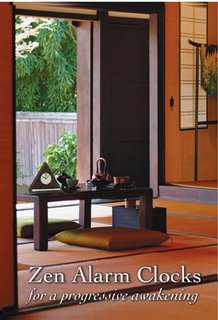 Zen Clocks and timers for yoga and meditation adapted from Yoga Journal.com August 2011
Now & Zen, Inc.
1638 Pearl St.
Boulder, CO 80302
(800) 779-6383
Posted in yoga, Yoga Timer, Yoga Timers by Now & Zen
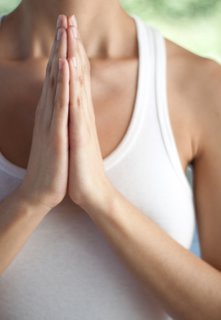 prayer is good medicine Two researchers find merit to the idea that spiritual influences can have a beneficial, physiologically measurable impact.
By Larry Sokoloff
Inspired by a visit to a hospital in India run by Sri Sathya Sai Baba and his followers, two Duke University researchers are investigating the effects prayer and other nonmedical practices can have on a patient’s recovery after angioplasty.
Cardiologist Mitchell W. Krucoff and nurse practitioner Suzanne Crater were amazed by the upbeat reaction of patients and staff at the Institute for Higher Medical Sciences in Putta Parthi following the daily visits of Sai Baba, whose followers worship him as an avatar, an incarnation of divinity.
In contrast to the lethargy and depression common in many hospitals, the euphoric atmosphere at the Institute was overwhelming, Krucoff says. Patients and staff were beaming throughout the researchers’ visit. “God came every day and made rounds and touched them,” Krucoff says. “That kind of atmosphere has got to have physiological impact.”
After their visit, the two researchers wanted to test the idea that spiritual influences could have a physiologically measurable impact. But how do you measure the religious influence that they had witnessed? As Krucoff says, “We couldn’t scatter Sai Baba clones or Mother Teresa clones all over the United States.”
Instead, Krucoff and Crater wondered what would happen if prayer and other forms of nonmedical treatment were offered to patients undergoing stressful heart procedures. Would patients who were prayed for or taught to relax benefit more than patients who were not? Their musings led them to begin the MANTRA study (Monitor and Actualization of Noetic TRAinings) at the Durham, North Carolina, Veterans Affairs Medical Center. Besides a group of patients who had prayers said for them, three other groups were exposed to touch, guided visualization, or stress relaxation. A fifth group served as a control group and did not receive any prayers or treatments.
The most unusual part of the study—and apparently the most effective—involved the healing use of prayer. The study found that angioplasty patients with acute coronary syndromes who were prayed for did 50 to 100 percent better (in terms of heart rate, blood pressure, and EKG results) than did patients in the control group. Patients who received guided imagery, touch, or stress relaxation assistance also benefited, showing a 30 to 50 percent trend toward improved outcomes.
Prayers were offered by seven different religious groups. Each group received the same data: the name of a male patient who was undergoing a catheter procedure, a stressful operation which involves threading a tube into the heart while the patient is awake. The prayers went out from Buddhist monasteries in Nepal and France, from Moravians in North Carolina, and from Carmelite nuns in Baltimore who prayed during evening vespers. In Jerusalem, prayers were inserted in the city’s Western Wall by a Jewish group. Fundamentalist Christians, Baptists, and Unitarians prayed as well.
The prayers proved effective even though the MANTRA patients didn’t know they were being prayed for, unlike the beaming patients in India who saw Sri Baba at their bedsides.
A larger trial of 1,500 patients is now under way at hospitals in North Carolina, San Diego, Washington, D.C., and Oklahoma City. The larger study will test whether the results can be repeated, and may influence doctors in the future to include spirituality in their prescriptions.
 Prayer timers and clocks with chimes Now & Zen, Inc.
1638 Pearl St.
Boulder, CO 80302
(800) 779-6383
adapted from Yoga Journal.com
Posted in yoga, Yoga Timers by Now & Zen
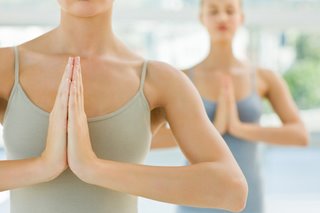 yoga fix Tension can be a pain in the neck. Master these gentle moves to create lasting ease.
By Barbara Benagh
By the time Tatiana Makoukhina came to my workshop last spring on easing tension in the neck, shoulders, and upper back, she’d been suffering from chronic pain for more than a decade. In the early ’90s, as a single mom newly arrived from Russia, Tatiana worried constantly about whether she could make a new life in America with her daughter. She put in long hours as a hotel cleaner—the only job she could find—and felt she could never relax, never stop working and planning. Her back and neck were constantly rigid with tension, she suffered severe migraines, and then she herniated a disk in her lower back lifting a heavy mattress.
Despite her persistent discomfort, Tatiana worked hard to manage her pain and improve her health. Athletic in her childhood—she had loved gymnastics, volleyball, and dancing—she began running and exercising again. Surgery for her disk injury helped with her lower back pain, and her migraines eased once she began practicing yoga regularly in 2002. Still, nothing seemed to banish the tightness, aches, and occasional stabbing pain in her shoulders and neck.
Tatiana certainly isn’t unique: We all live in a world filled with anxiety. We race through hectic days and fall into bed exhausted; we fret over our bills, our kids, our jobs and the state of the planet, too. It doesn’t help that many of us have lives skewed toward the sedentary, with too many hours spent hunkered down behind a computer or steering wheel. Our stress often winds up stored in clenched necks, shoulders, and backs-which eventually weakens our muscles, strains our joints, and limits our range of motion. The tension hangs heavy on our necks and shoulders, as unwelcome as a winter coat on a summer day.
It doesn’t have to be this way, of course. The shoulder girdle is designed so your arms, neck, and shoulders can move freely and easily. Even if you have a history of injuries or have suffered from chronic tension for years, the approach I’ve developed can help you learn to soften your neck and shoulder muscles and restore ease and freedom.
When I ran into Tatiana a few weeks after the workshop, she was thrilled with her progress. Not only had the workshop taken away her pain but, even better, she’d been able to stay pain-free by including 5 to 10 minutes of my exercises in her daily hour of yoga. Her back, shoulders, and neck were feeling more relaxed than she’d ever imagined possible.
Learn to Let Go
Passive relaxation exercises are the core of my program. Just about anyone can benefit from them, even those who’ve never done a single asana. These poses give you a taste of ease and comfort, a touchstone experience you can refer to again and again as you progress into more active exercises and challenging yoga poses.
Relaxing deeply is a sanctuary, yet few of us allow ourselves to enter it. It feels so good that you’d think it would come easily, but many of us are so accustomed to tension that we have to relearn the natural process of letting go.
The first step is simply lying down on your back on a firm, comfortable surface and letting yourself rest. Almost certainly, you’ll feel your muscles naturally releasing tension because they no longer have to work to hold you upright. You may notice you spontaneously let out a sigh of relief.
To relax more deeply, though, you have to consciously build on these natural responses. The secret to doing this is to focus on the movement of the breath in your body, using it to uncover and melt away tension.
Begin by tuning in to your breath. Pick up its rhythm, letting your muscles relax into and move with its gentle rise and fall. Throughout your practice, let this rhythm hold your attention. Feel how your breath creates an effortless expansion and contraction. Also notice any places in your body that seem tense or immobile or unresponsive to the ebb and flow of your breathing. To help them release, imagine saturating these tight, dull areas with the easy rhythm of your breath; if that doesn’t work, imagine your breath originating deep within your tense places.
Bringing your attention to your contracted spots will probably help them release. But if you’re like most people, you’ll also discover tension that’s stubbornly resistant to letting go. When that happens, remember to be patient and curious.
Chronically clenched muscles can feel tender, sore, rock hard, numb—or some combination of these sensations. Let your awareness drop deeper and deeper into each tight area, getting to know its specific character. With your breath, ask your muscles to slowly shift from tension to release, from density to expansion, from hard to soft.
Once you’ve experimented with this undoing process, apply it in some simple reclining positions like the Neck Blanket Stretch and the Arm-under-Back Stretch. These positions use body weight, position, and basic props to create gentle traction on classic neck and shoulder hot spots.
As you explore these passive exercises, don’t expect your tensions to melt away instantly. To undo your chronic patterns of holding, you have to learn to focus completely on letting go, and that takes time. Your undoing skills will mature with practice. The more often and more deeply you relax, the deeper your breath will penetrate, and the more subtle your awareness will become.
By starting the undoing process, you’ve begun a conversation with the residue your past has left behind in your body. Not only can the process lead you to much greater comfort, but it can also be profoundly contemplative and rich with insight. As you relax, you may discover emotions and memories that seem to have been locked within your tension. Years after my accident, I uncovered a surprising amount of anger at my sister for pushing me to go on that fateful date. The undoing process has led me to unexpected stores of positive feelings, too; when I began to practice again after a nearly fatal asthma attack, I found myself flooded with joy and gratitude.
As you continue to release chronic muscular holding, you’ll sense that contraction creates subtle vibrations of mental unease, and as these dissipate, you’ll discover that easing tension from your neck and shoulders calms your mind, too.
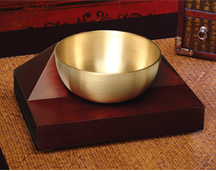 Yoga Timer with Tibetan Singing Bowl Use our unique “Zen Clock” which functions as a Yoga Timer. It features a long-resonating acoustic chime that brings your meditation or yoga session to a gradual close, preserving the environment of stillness while also acting as an effective time signal. Our Yoga Timer & Clock can be programmed to chime at the end of the meditation or yoga session or periodically throughout the session as a kind of sonic yantra. The beauty and functionality of the Zen Clock/Timer makes it a meditation tool that can actually help you “make time” for meditation in your life. Bring yourself back to balance.
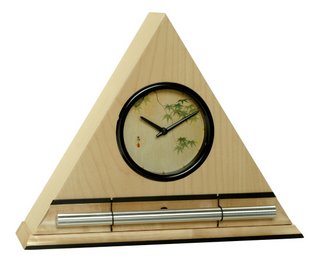 yoga accessories Now & Zen’s Yoga Timer Shop
1638 Pearl St.
Boulder, CO 80302
(800) 779-6383
Adapted from Yoga Journal.com by Barbara Benagh has taught yoga for 30 years. She lives in Boston and cofounded the Cambridge studio Yoga 301. Her website is www.yogastudio.org.
Posted in yoga, Yoga Timer, Yoga Timers by Now & Zen
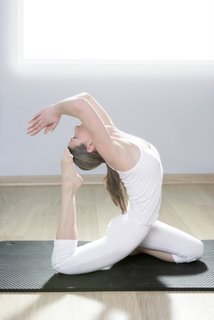 yoga body mind Release negative emotions and
improve your alignment by opening
the muscles around your hips.
By Diane Anderson, sequence by Stephanie Snyder
There are so many reasons to do hip-opening poses: Supple hips can ease back pain, give you a more agile gait, and even improve circulation in your legs. But there’s a more subtle benefit to hip openers, too: We hold stress and negative emotions—such as fear, guilt, and sadness—in our pelvis, says San Francisco vinyasa teacher Stephanie Snyder. For this reason alone, Snyder believes it’s particularly important to do poses that move prana (life force) through that area. “You know your junk drawer at home?” she asks. “The pelvis is like the body’s junk drawer. Whenever you don’t know what to do with a feeling or experience, you put it there.”
Snyder designed the following sequence to move your ball-and-socket hip joint through its full range of motion. When you do it regularly, you may see improvement in the rest of your practice, since the pelvis is the foundation of alignment in many poses. Here are some things to remember as you
do the sequence. Take your time with opening your hips, because hip ligaments are strong. “Don’t push yourself,” Snyder advises. “Be receptive to the breath moving into the pose.” If you have a knee injury, modify the seated poses (5 and 6) by straightening your bottom leg, and practice poses 7 and 9 on your back. At the same time, don’t avoid difficulty. People often dread hip openers because they are such a challenge. “Don’t look away from tight places,” Snyder says. “Be present without judgment. You can really make this a delicious practice.”
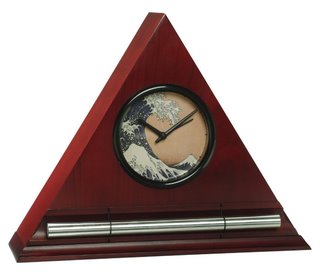 Yoga tools and timers Now & Zen, Inc.
1638 Pearl St.
Boulder, CO 80302
(800) 779-6383
adapted from Yoga Journal.com
Posted in yoga, Yoga Timer, Yoga Timers by Now & Zen
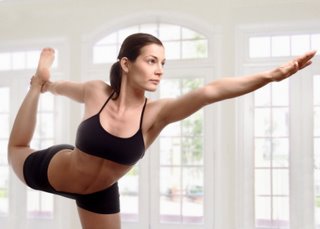 Winter Yoga For winter sports fans, yoga offers refined technique, better balance, and the freedom to fly.
When Hannah Dewey skis, she likes to go fast. “I tend to powerhouse it,” she says. “I muscle my way through.” As a longtime skier and a professional wildfire fighter, Hannah is strong enough to ski fast, even uphill. But after 22 years of skiing, she’s learned something surprising, a lesson that comes from her yoga practice: To get the most power, she has to slow down and focus her mind on the present moment. “If I go calmly step by step, concentrating on my form, I can actually go faster,” she says.
I met Hannah, along with more than 40 other skiers, at the eighth annual Women’s Ski and Yoga Retreat in the Methow Valley of northern Washington. I joined a group of athletes who do yoga for many reasons: to enhance their performance on skis, to ward off injury, and to experience the singular bliss that comes from a focused effort and a clear mind. “Yoga and skiing go together for me,” says Mary Ellen Stone, another retreat regular. “They’re both ways of putting away all the clutter in our lives and focusing physically, emotionally, and technically on something that’s not easy to do. But when it all comes together, it’s one of the best feelings in the world.”
I’d come to have my own experience of the synergy of yoga and skiing, but because I hadn’t skied since
I was a kid, getting faster was not my primary goal. Still, the lessons I’d internalized in my years of yoga practice turned out to serve me well on the trails.
Let It Snow
The secluded Methow Valley is a Nordic skier’s paradise. A popular place for Olympic skiers to train,
the valley has 120 miles of cross-country trails—one of the longest systems of groomed trails anywhere
in North America—as well as access to many more miles of challenging backcountry ski routes in the 4 million acres of the surrounding Okanogan-Wenatchee National Forest.
The women meet at Sun Mountain Lodge, the mountaintop resort hosting the retreat, which
is organized by the nearby Winthrop Fitness center. Many of my fellow retreat participants have skied competitively. Some are experts at downhill skiing but have come to master cross-country. A few are snow-sport newbies like me.
At 7 o’clock the next morning, I warm up my resistant quadriceps in Melanie Whittaker’s yoga class. Melanie is a cross-country skier and the yoga director for Winthrop Fitness, and has been practicing yoga for more than 30 years. She teaches an Iyengar-inspired style and counts elite skiers and other athletes among her students. She explains that we’re preparing ourselves to move forward with agility and speed while balancing on a slippery and constantly changing surface of snow and ice. For the next 90 minutes, she leads us through a series of strong
poses like Ardha Chandrasana (Half Moon Pose) and Virabhadrasana (Warrior Pose) I, II, and III, which call for strength, balance, and confidence—the same qualities we’ll need
to draw on once we strap on our skis.
Moving with any sort of grace on a slippery surface is inherently challenging, she tells us,
as we do Utkatasana (Chair Pose), and to keep our balance we’ll need a strong, compact form and a low center of gravity. She also reminds
us that to be successful at skiing, as with yoga, we have to learn to trust our bodies. When we do Handstand, she reminds us that it is trust that allows us to bring our hips over our heads, and our legs into the air. I’ll have occasion to remember her words later in the day.
Free Fall
After class I make my way, skis in hand, to a flat, groomed field for my beginner’s lesson.
A misty fog floats across the hills, just above the treetops, and occasional watery sunshine glints from behind the clouds.
The two most common kinds of cross country skis—classic and skate—have corresponding, but different, techniques. To move forward on classic skis, you keep your feet
parallel and execute a series of gliding lunges. With each step, you shift your center of gravity forward, bringing your body weight fully over the ball of the front foot, almost past the point where you feel you’re going to fall, while pushing the ground away with your back leg. To
balance and stay stable, says my instructor, you tuck into an Utkatasana-like form, bending your front knee and ankle, dropping your sitting bones, and firming your core.
When I ask some of the more experienced skiers, like Hannah, how their yoga practice supports their skiing, they emphasize core strength and balance. “In skiing, my form comes from my core,” says Hannah. “I concentrate on keeping my core really tight, and my legs just follow.” As the ski class gets under way, I see what she means. If I bend my ankles and knees and tip my weight forward, I glide. If I straighten up out of that slight tuck, I
wobble and, more often than not, fall.
“Bend your knees and ankles,” shouts my instructor. “Weight forward!” I bend my knees. I bend my ankles. I drop my sitting bones, finding the skier’s Utkatasana. I connect to the strength in my ankles, calves, and thighs and, with a slight adjustment, release my body weight forward. And there it is. I am gliding with a remarkable feeling of ease, making wide turns down the slope. I no longer feel that the skis are unruly clown shoes, tripping me up. They are seamless extensions of my legs, and they do my bidding.
That afternoon, we take off down a trail into the forest. I experience a delicious sense of well-being and freedom as I slide through the quiet forest and enjoy the afternoon sunlight gleaming through pine trees decked with garlands of sage-green moss. I’ll never look at Utkatasana the same way after today. Instead of feeling like a sweaty struggle for balance, it now feels like the pose of victory.
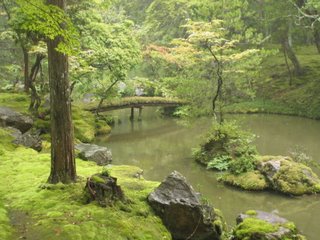 Moss Garden Restore and Tend
That evening, the group meets for an apres-ski stretch, and I find Melanie for a quick consultation. All of that forward crouching has left me with a sore back. She has me try a variation of Sphinx Pose, in which I press my hands into the ground and work my upper arms toward each other to open up my upper back and chest. A supine twist relieves my lower back, and Supta Baddha Konasana (Reclining Bound Angle Pose) helps release the piriformis, a muscle deep in the buttocks that tends to tighten in skiing.
As to my other aches and pains—I’m feeling my shoulders, arms, core, inner thighs, outer thighs, calves, and ankles—she tells me I’m making the rookie mistake of unnecessarily gripping a lot of auxiliary muscles I don’t need to in the process of trying to engage the ones I do. “You’ll get more power and control when you learn to isolate the muscle groups you need,” she says. “You’ll also be a lot less sore and fatigued at the end of the day. Practicing the body awareness you learn in yoga will help you on the slopes.”
Being Balance
In the next morning’s yoga class, Melanie brings our attention to our feet. Being aware of our feet, she tells us, is a critical factor in balance. In Utthita Parsvakonasana (Extended Side Angle Pose), we practice putting even pressure through the entire foot, observing how the slightest shift to one side can unbalance us.
The skiing portion of the second day focuses on skate-style skiing. Skate skis are especially slippery. When you are moving across the snow’s slick surface, the slightest muscular effort creates motion, which presents a new kind of balancing challenge. To gain control of my movement, says my instructor, I have to master the art of “edging,” or delicately shifting weight to the inner edge of my foot to grip into the snow, which will allow me to push off into a glide.
As I slide around like a bumper car, I try to remember to spread my toes and keep my feet relaxed so that I can control how my weight shifts. Meanwhile, I’m fielding more instructions: Bend your knees, push off the back foot, shift weight to the front foot, bring one pole forward. Every time I try to do one thing the instructor tells us, I forget the others, tense up, and lose my balance. Finally she notices my difficulty and gives me yet another instruction: “You—just stop thinking!”
I pry my gaze away from my feet, look straight ahead in the direction I want to go, and thrust myself forward into a glide. I plunge forward, and this time I start to get the momentum, the slight swaying, the powerful back-leg strokes pushing me forward. I grin like a little kid, glancing at the teacher to make sure she sees me before my next slippery fall.
And then it occurs to me: Balance is not something you achieve and hold on to. It’s more ephemeral; it’s a string of temporary successes, held momentarily, lost, and then discovered again. Skiing gives you a fleeting experience of balance with each shift of weight and each glide. But it’s not permanent. When you lose it, you just have to have faith that you’ll come back to it.
Sweet Surrender
I feel I’ve been treated to a glimpse of the synergies of yoga and skiing. Hannah told me that her favorite yoga teacher reminds her to slow down and stay focused when she starts to rush through her Sun Salutations. Of all the benefits that her practice confers on her sport, she says, the most important one has come in the form of a mental shift: “Yoga has helped me slow down and concentrate on myself, and on having a good time out there.”
Mary Ellen echoes this sentiment: “When you’re out there and you see the snow sparkling on the trees and hear the ravens calling, you think, ‘I’m so lucky, so extraordinarily lucky, to be doing this.’ It’s a deep feeling, being there, right in that moment. That feeling is hard to come by.”
After dinner on the last night of the retreat, I make for the hot tub. I set my chin on the cold rock ledge of the tub and count a handful of lights in the houses in the valley below. The rest of my view consists of the snow-blanketed Mount Gardner. The full moon shines through the spreading branches of a pine tree on the slope before me. A rumbling sound disturbs the quiet as the trail grooming machine starts up. To my ears, it’s a sweet sound, promising freshly groomed trails to glide down in the morning.
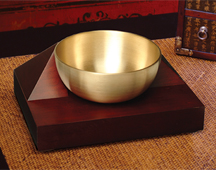 Timers for Yoga and Meditation with Tibetan Singing Bowl Use our unique “Zen Clock” which functions as a Yoga Timer. It features a long-resonating acoustic chime that brings your meditation or yoga session to a gradual close, preserving the environment of stillness while also acting as an effective time signal. Our Yoga Timer & Clock can be programmed to chime at the end of the meditation or yoga session or periodically throughout the session as a kind of sonic yantra. The beauty and functionality of the Zen Clock/Timer makes it a meditation tool that can actually help you “make time” for meditation in your life. Bring yourself back to balance.
 Meditation timers and chime clocks by Now & Zen, Inc. Now & Zen’s Yoga Timer Shop
1638 Pearl St.
Boulder, CO 80302
(800) 779-6383
Adapted from Yoga Journal.com, By Carmel Wroth, sequence by Melanie Whittaker.
Posted in Well-being, yoga, Yoga Timer, Yoga Timers by Now & Zen
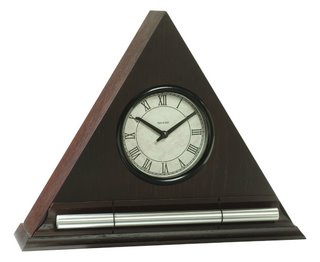 Zen Alarm Clocks and Meditation & Yoga Timers Sometimes the fastest way to speed things up is to slow down. Try this slow-motion hand meditation to clear your mind.
However, you can learn to tune in to prana when you’re awake and to build reserves of it.When you remove obstacles to free-flowing prana, you feel more alive and present in your life. Think of how great you feel after a yoga class or a night of dancing or making love. Movement can awaken both prana and awareness.
Slow-motion movement slows your mind. Just a few minutes of it before sitting is an excellent segue to a more subtle meditation practice. Try lifting your arms overhead and slowly releasing them to your sides, concentrating on the micro-movements of your hands as they flow through space. Just a minute of this helps you move into pratyahara, sense withdrawal.
Paying attention to slowing down helps you be mindful during the day. Try brushing your teeth or washing dishes more slowly and see how that brings your mind into the present. Slowing down a yoga pose also helps draw you into a dynamic flow of sensation, breath, and awareness.
A fascinating paradox emerges when you allow yourself to become absorbed in the small details of any physical action. Embracing movement, you are inexorably drawn to the stillness within.
Try Your Hand
1. Sit comfortably and shake out your hands, as if you were flinging water off your fingertips. Deepen your breath slightly. When your hands feel energized, place them on your thighs, palms facing up. Take a few moments to focus on the sensations in your hands. Feel, if you can, the pulse in your fingertips.
2. As your breath deepens, see if you can activate your belly, diaphragm, rib cage, and upper chest. Breathe deep into your belly. Fill your upper chest with air at the top of the inhalation, then see how much you can relax with each exhalation.
3. Imagine a light at the core of your being. As you breathe in, let the light pulse a little brighter. When you exhale, let it pulse a little dimmer. You can even give it a temperature or assign a color to the sensations in your belly.
4. With each breath, imagine this energy filling your chest and shoulders. Feel it flow down your arms and into your palms. Notice light and warmth filling your chest cavity, your rib cage, your arms, your hands.
5. Rest your awareness in and around your hands. Feel the air touching your palms, fingers, and thumbs. Feel the outline of your hands and the space between your fingers. When you’re ready, gently lift your hands off your body just enough to release them into the air, then let them be perfectly still. Relax your shoulders, arms, and palms.
6. Then lift your hands as slowly as possible, almost imperceptibly. Feel the smallest movement in your awareness as you continue to life your hands. See how much you can slow down. Imagine the molecules of air rolling between your fingers. See if you can slow the motion down so much that your hands feel as if they’re moving by themselves.
7. When it feels right, turn your palms toward each other. As your hands come together, pulse them ever so slowly. Imagine, if you can, the edges of the energy field between your hands. You may feel as if you’re holding a ball of pulsing energy, or as if your hands were opposite poles of a magnet. Your mind is relaxed but also aware, witnessing the flow of sensation into your hands.
8. For the next few minutes, let your hands move naturally and your mind observe the smallest details of sensation. At some point, bring your hands to a place on your body that needs healing or attention.
9. In your own time, let your hands come to rest in your lap and sit for a few more minutes in silence.
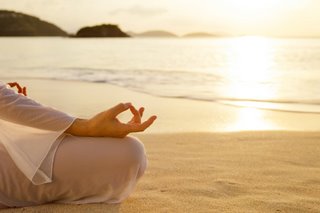 Yoga and meditation timers and clocks Now & Zen, Inc.
1638 Pearl St.
Boulder, CO 80302
(800) 779-6383
Adapted from Yoga Journal.com by Jonathan Foust, M.A., who is a senior teacher and past president of Kripalu Center in Lenox, Massachusetts, runs yoga and meditation retreats and trainings internationally.
Posted in Bamboo Chime Clocks, Meditation Timers, Meditation Tools
« Previous Page
Next Entries »
|
|
|
|